Travel log: December 3-4, 2016; France
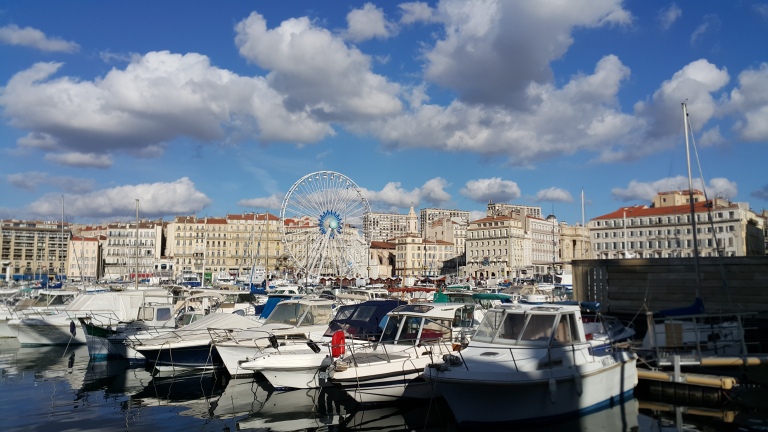
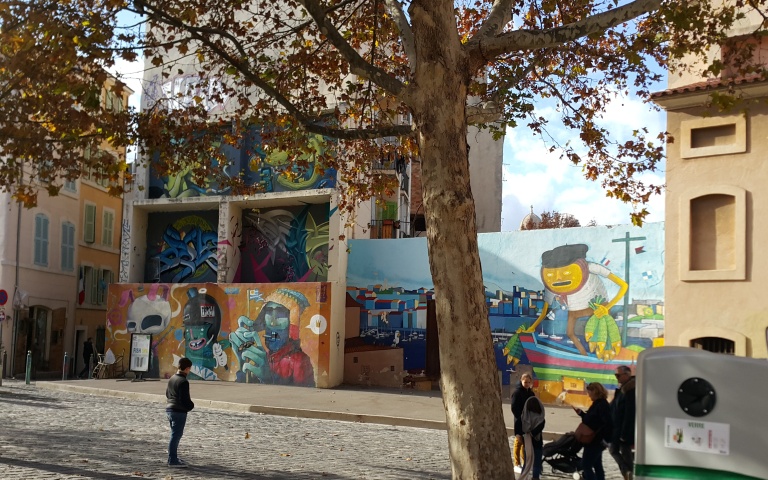
Marseille is a city of contradictions. Known for its cultural significance as well as its dangerous reputation, this trade hub on the southern coast of France serves as both a gateway to Mediterranean culture and a glaring reminder of urban failures. But Marseille’s vibrancy shines through this image of grime and crime. A quick walk in the city’s historical districts reveals antique shops, open-air art galleries, colorful graffiti—unexpected charms that invite passersby to linger and admire.
Compared to other French cities, Marseille has a more discordant, less polished feel. It is unashamed of its faults, unconcerned with impressions. At the same time it also seems more exposed, more vulnerable, with certain districts jazzed up seemingly for the sole benefit of tourists. Situated so close to the sea, the city of Marseille is a cultural melting pot where travelers come to discover millennia of history and life at the edge of the Mediterranean.
The Old Port is the heart of historic Marseille. It is a busy, lively harbor lined with stalls selling all manner of fish, squids, lobsters, and shellfish. These stalls are usually surrounded by tourists gawking at ugly fish or recording videos of escaping octopi, but you can also spot locals doing their weekly shopping. Flowers and plants are for sale further down the quay.
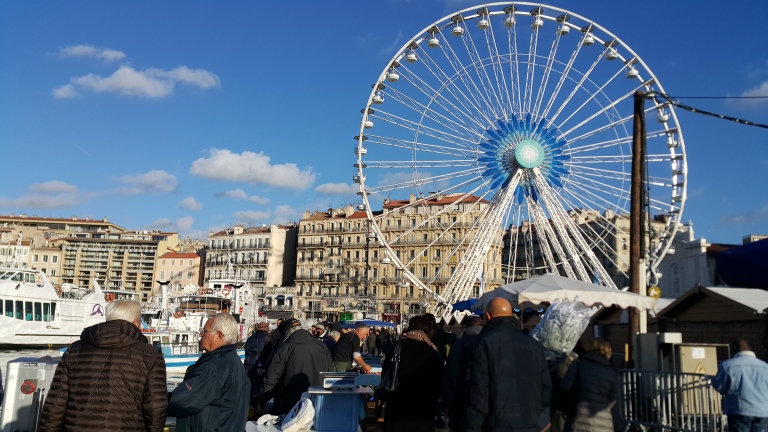
It is best to visit in the morning, when fishermen have just brought in the day’s catch.
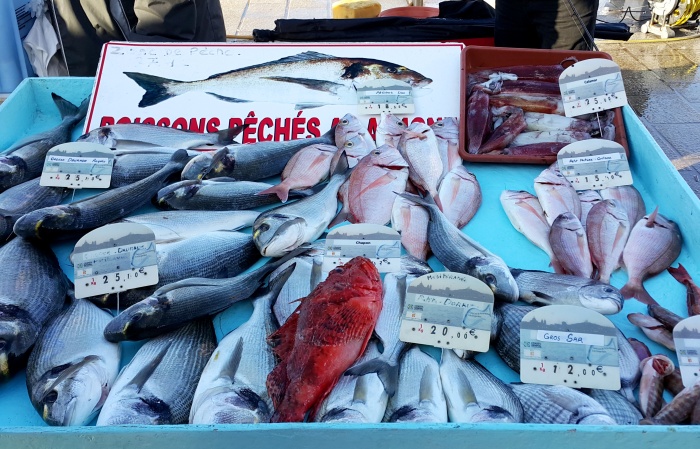
Musée des civilisations de l’Europe et de la Méditerranée (MuCEM)
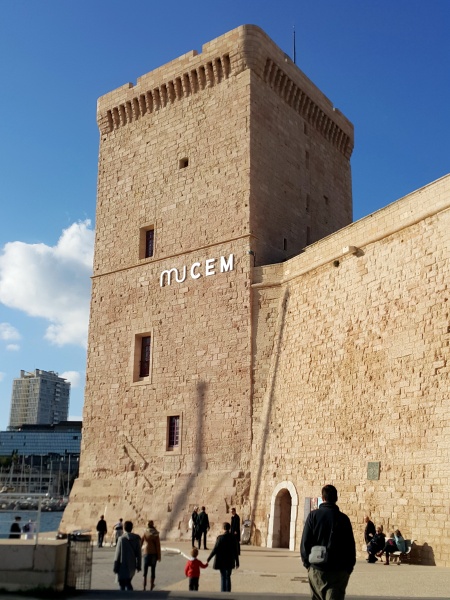
Unlike Damien, a history buff, I wasn’t really keen on visiting this museum. But the MuCEM’s permanent exhibition on the origins of deities and agriculture, the interrelation among religions, man’s role in society, and the lure of the unknown captivated me. More than the artifacts on display, the appeal of these four galleries lies in their genius organization—with an interesting layout, a variety of media (we loved the animated shorts), and just enough information to spark your curiosity, not inundate and overwhelm.
The MuCEM is doubly worth visiting for its structure. Encompassing the centuries-old Fort Saint Jean and the new J4 building, the museum offers stellar views from the fort’s ramparts as well as from the suspended footbridge between the two sites.
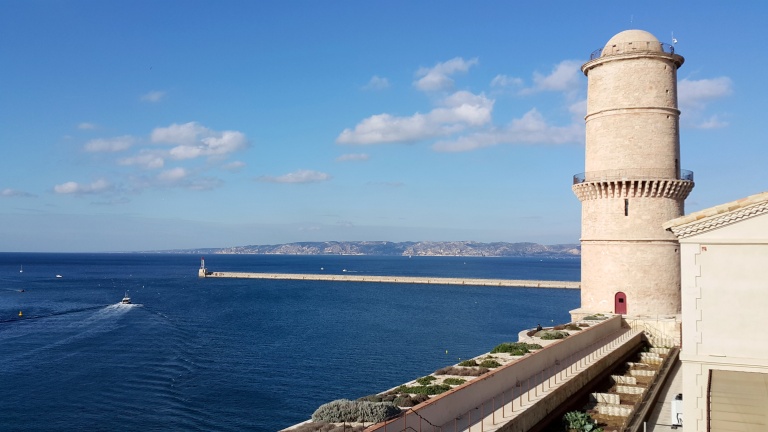
For a relatively small museum, entrance is pricey at €9.50, but the MuCEM offers free admission on the first Sunday of every month. We didn’t even know, but luckily we arrived on the first weekend of December!
Leaving the MuCEM from the J4 exit, you get an unobstructed view of the Marseille Cathedral. A national monument of France, the Cathédrale de la Major is actually composed of two cathedrals: the remains of an older structure and a newer one, respectively called the Vieille and Nouvelle Major. You can also approach the cathedral from the other side, coming from La Vieille Charité—a renovated almshouse now used as a cultural center—but the view isn’t even comparable.
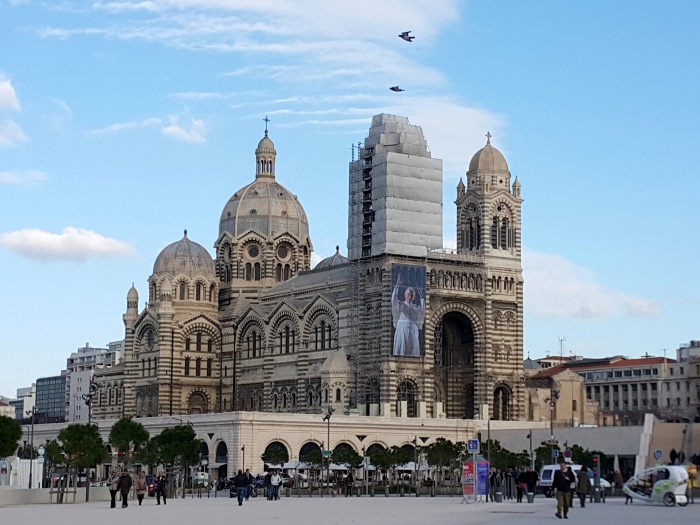
Undoubtedly Marseille’s most famous religious structure, the Notre-Dame de la Garde sits atop a hill overlooking the city. It’s not that far a walk from the port, and the climb up offers gradually more impressive views of the basilica and its gold-leaf statue of the Madonna and Child.
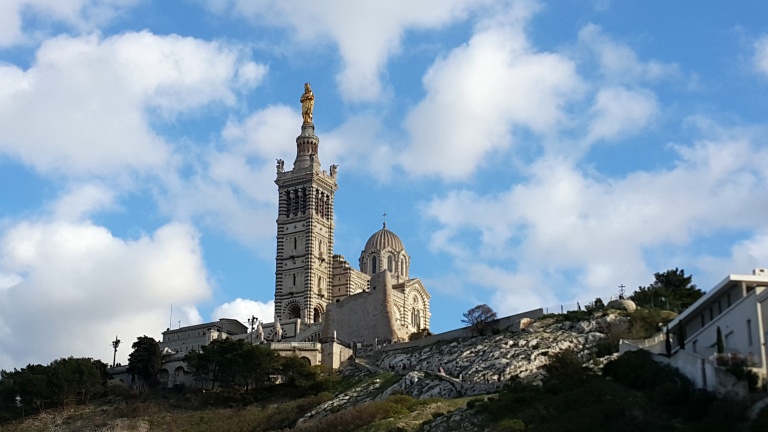
Having recently moved to Lyon, I couldn’t help but compare this church to the Basilique de Fourvière, also situated atop a hill. Although the latter has much grander interiors, it’s hard to beat the scenery from outside Marseille’s basilica, breathtaking even on a cloudy day.
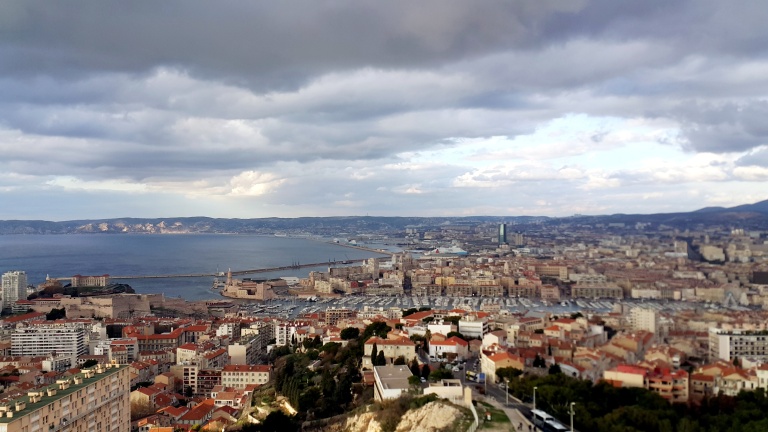
Where to eat
We had a delicious, reasonably priced lunch at Brasserie des Templiers. Having spent the whole morning walking, we appreciated the large serving portions. Damien ordered mussels while I had this lovely aïoli dish.
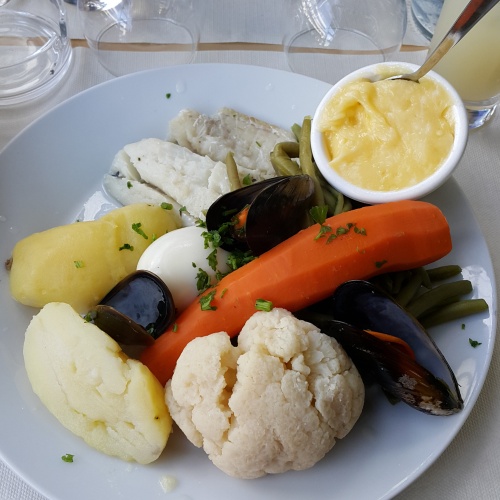
Aïoli is actually just a sauce made with eggs, olive oil, and garlic—a kind of mayonnaise—but it goes well with everything and is a definite must-try.
For dinner, we headed to Place aux Huiles, a square dotted with restaurants catering mostly to tourists. The traditional ones are situated so closely together and offer such similar menus that it almost doesn’t matter which one you choose. (We selected based on ambience, then promptly forgot the name.)
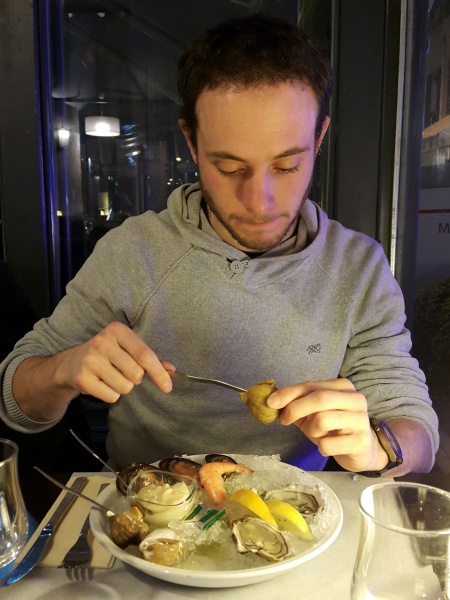
We enjoyed our appetizers, but were disappointed by the small servings of very bony bouillabaisse.
Where to sleep
Damien booked us at the ResidHotel Le Grand Prado. It’s pretty far from the city center, but their rooms were way better than expected—we even had a balcony!—and there’s a subway station nearby. After spending so much time in the tourist districts, it was also refreshing to see Marseille from the perspective of its everyday residents and commuters.
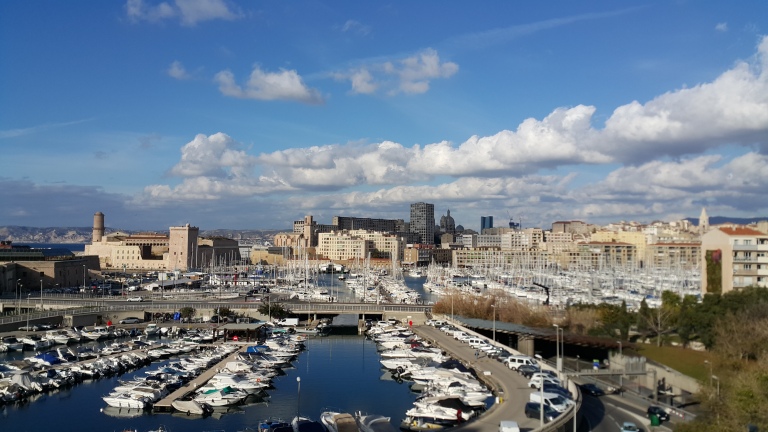
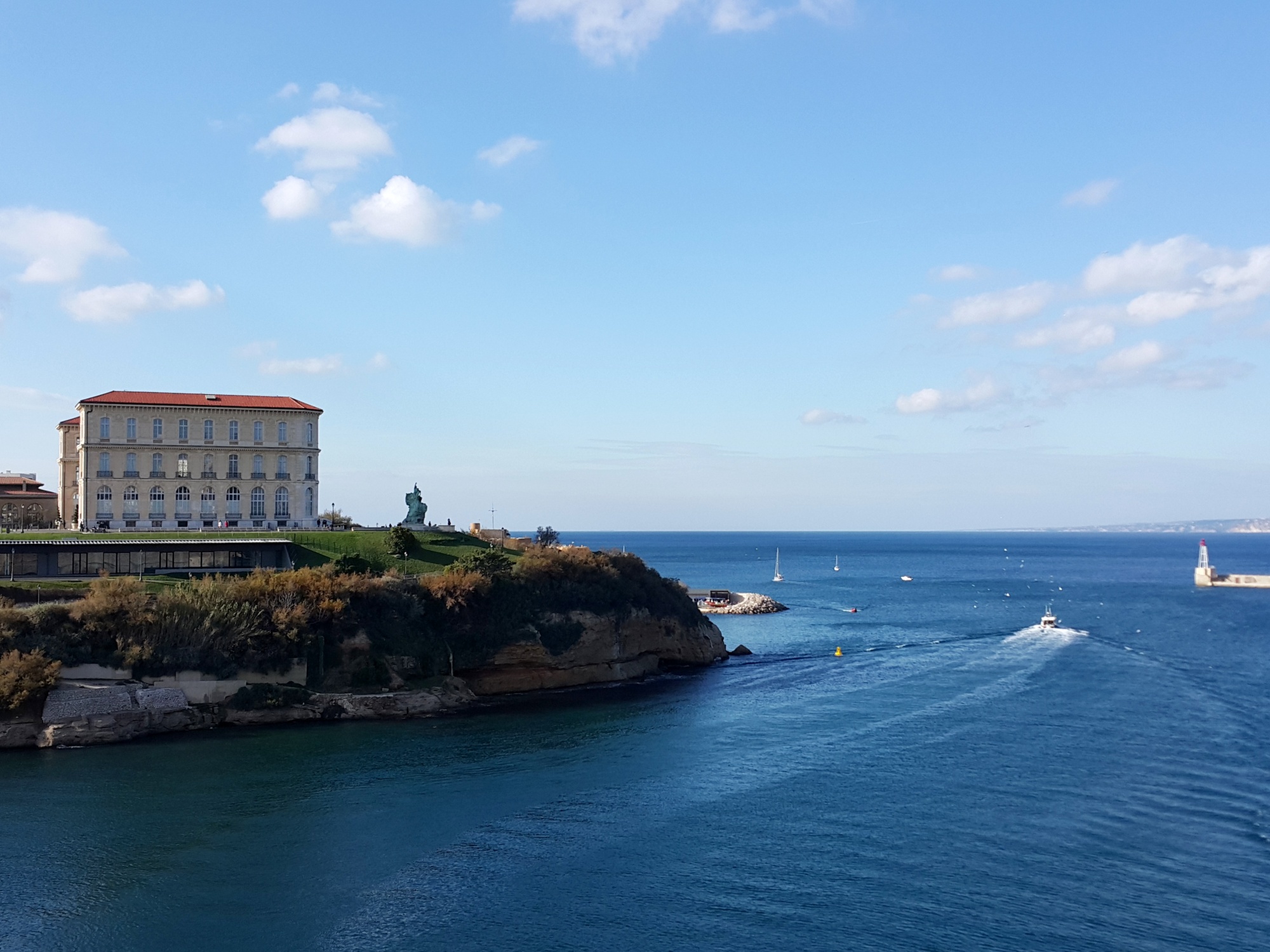
Marseille is one of my favourite cities on the southern coast of France; revisited it in late October last year and loved wandering round Fort St. Jean & the MuCEM area as they weren’t there when I first visited six or seven years ago. I also live in Lyon and whilst I find the view from Fourvière impressive, the view from Notre Dame de la Garde tops it for me – city, sea and mountains all in one!
LikeLike
I agree! Although I love living in Lyon, it can’t compete with Marseille in terms of climate and scenery.
LikeLiked by 1 person
France is one of the most spectacular countries I have been to. This post and pictures really capture the essence of this awesome place, Tara!
LikeLiked by 1 person